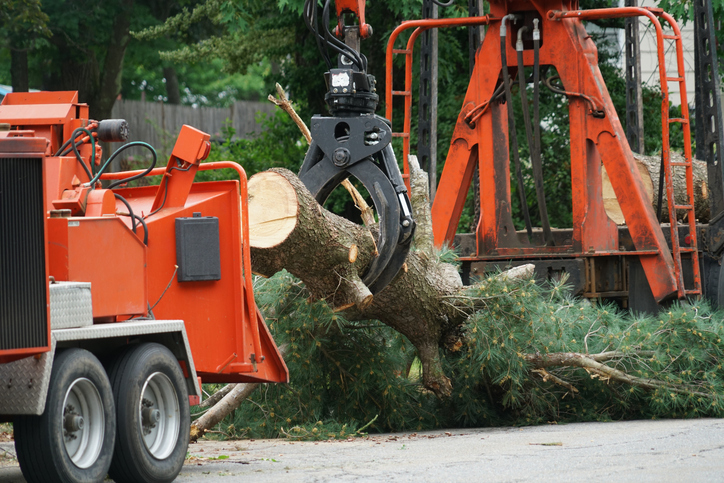Tree Removal in Kansas City: Importance, Process, and Best Practices

Tree removal is a crucial aspect of maintaining the safety and health of urban landscapes, particularly in a city like Kansas City, where trees play a significant role in enhancing the aesthetic, environmental, and economic aspects of the community. Whether for safety reasons, development, or environmental concerns, tree removal must be approached carefully, considering both the immediate need and the long-term impact on the environment. This essay will explore the importance of tree removal in Kansas City, the processes involved, safety considerations, and best practices for ensuring that tree removal is done responsibly and effectively.
Importance of Tree Removal in Kansas City
While trees provide many benefits, there are instances when removal becomes necessary. The urban environment of Kansas City, with its fluctuating weather conditions and growing infrastructure demands, can present various challenges for tree maintenance. The decision to remove a tree is not made lightly and typically occurs for one or more of the following reasons:
- Safety Concerns: One of the most common reasons for tree removal in Kansas City is safety. Overgrown or damaged trees, especially those with weak branches or compromised trunks, can become hazards. In Kansas City, severe weather, including thunderstorms, high winds, and tornadoes, can exacerbate these risks by causing trees to fall or lose large branches. A tree that poses a threat to people, buildings, vehicles, or power lines may need to be removed to prevent accidents or damage.
- Health of the Tree: Diseased, dying, or infested trees can spread pests and pathogens to other trees, jeopardizing the health of the surrounding environment. In Kansas City, certain tree species like ash trees have been affected by pests such as the emerald ash borer, which has led to widespread tree mortality. When trees cannot recover from disease or infestation, removal becomes necessary to protect the rest of the urban forest.
- Infrastructure Development: As Kansas City grows, development often requires the removal of trees to make way for new construction, roads, or utility installations. While this can be a contentious issue, in some cases, removing trees allows for better urban planning and more efficient use of space. However, efforts should be made to minimize the environmental impact of such removals through reforestation or landscaping alternatives.
- Property Value and Aesthetics: In some instances, trees may be removed for aesthetic or real estate reasons. Overgrown or poorly located trees can block views, overshadow homes, or interfere with landscaping. In such cases, tree removal can improve curb appeal and property value. Additionally, trees that are too close to homes or buildings may be removed to prevent root damage to foundations or damage to roofs caused by falling branches.
- Utility Management: Trees located near power lines or communication towers can pose significant risks during storms or high winds. Overgrown trees that make contact with power lines can cause outages, fires, or even electrocution. In Kansas City, utility companies regularly remove trees or trim their branches to maintain a safe distance between trees and power lines, ensuring the reliability and safety of the electrical grid.
The Tree Removal Process in Kansas City
The process of tree removal is a delicate and multi-step operation that requires skill, precision, and the right equipment. Whether the removal is due to safety concerns, disease, or development, the procedure typically involves several key steps:
- Assessment and Evaluation: Before any tree is removed, an arborist or tree removal expert assesses the condition of the tree. The evaluation includes checking for signs of disease, pest infestation, structural weakness, or damage. It is also important to consider the surrounding environment and how the tree removal might affect neighboring properties, structures, or other trees. In Kansas City, the assessment also includes determining if a permit is required for tree removal, particularly in areas with tree protection ordinances or on city-owned land.
- Preparation of the Site: Once the tree has been assessed and the decision to remove it has been made, preparations for the site begin. This involves clearing the area around the tree to ensure there is enough space for the removal process. In many cases, the tree removal team will set up safety barriers and signs to keep people at a safe distance from the work area. The work site should be free from vehicles, structures, and other obstacles that might hinder the removal process.
- Cutting the Tree: Tree removal experts use specialized tools such as chainsaws, cranes, and stump grinders to safely cut down the tree. In most cases, the tree is felled in sections, starting with the larger branches and moving toward the trunk. The team ensures that the tree falls in a controlled direction, minimizing the risk of damage to property or nearby structures. For large or particularly dangerous trees, cranes may be used to lift and lower heavy sections of the tree in a more controlled manner.
- Disposal of Tree Debris: After the tree is removed, the remaining branches, limbs, and trunk need to be dealt with. This can be done through chipping, grinding, or hauling away the debris. In Kansas City, tree removal services often include debris removal as part of the service, ensuring that the area is left clean and free of hazards. In some cases, the wood from a removed tree may be repurposed, for example, for firewood or mulch.
- Stump Removal: In many cases, the tree removal process includes stump grinding, where the stump is ground down to below ground level. This helps prevent the growth of new shoots or suckers from the stump and makes the area safer and more aesthetically pleasing. Stump grinding also eliminates tripping hazards and provides a clean slate for replanting or landscaping.
- Post-Removal Landscape Management: After the tree has been removed, many homeowners or businesses in Kansas City choose to plant a replacement tree or install new landscaping. This helps restore the visual appeal of the property and contributes to environmental efforts, such as reforestation or urban greening. Some residents may opt for tree planting as part of a broader tree care plan to ensure that the community's urban forest continues to thrive.
Safety Considerations in Tree Removal
Tree removal is a hazardous job that requires professional expertise and proper safety measures. Whether the tree is large or small, safety must always be a top priority. In Kansas City, the safety of both the workers and the general public is critical throughout the tree removal process.
- Training and Certification: Tree removal requires specialized knowledge and skills. Professionals in Kansas City should be certified arborists or tree removal specialists who have undergone training in tree biology, proper cutting techniques, and safety protocols. Certification from organizations such as the International Society of Arboriculture (ISA) ensures that tree removal experts follow industry best practices.
- Protective Equipment: Workers involved in tree removal should wear appropriate safety gear, including helmets, eye protection, gloves, safety boots, and hearing protection. Chainsaw operators should wear chaps to protect against chainsaw injuries, and fall protection systems should be in place when working in elevated positions.
- Weather Considerations: Kansas City’s weather can be unpredictable, and safety teams must monitor conditions before beginning tree removal. High winds, rain, or lightning can make tree removal dangerous, and work may need to be postponed until conditions improve. Planning for such contingencies is an essential part of ensuring the safety of everyone involved.
- Public Safety: During tree removal, the area surrounding the tree must be cordoned off to prevent bystanders from coming into harm’s way. Flaggers or spotters may be used to direct pedestrian and vehicle traffic away from the work site. Proper signage, warning cones, and barriers help to ensure that the public is aware of the potential dangers.
Legal and Environmental Considerations
In Kansas City, tree removal is regulated to some extent by local ordinances. These laws are designed to protect the city’s tree canopy and prevent unnecessary deforestation. Before removing a tree, residents may need to obtain a permit, especially if the tree is located on public land, is considered a historic or landmark tree, or is in an area with specific environmental protections.
Environmental considerations are also crucial when removing trees. Kansas City, like many cities, is committed to maintaining its green spaces and tree canopy. Efforts to mitigate the environmental impact of tree removal include planting new trees, recycling wood and debris, and preserving the overall urban ecosystem.
Conclusion
Tree removal in Kansas City is an essential service that plays a critical role in maintaining the safety, health, and beauty of the urban environment. Whether due to safety concerns, disease, infrastructure development, or aesthetics, the process of tree removal must be carefully planned and executed by trained professionals. The safety of workers and the public, the impact on the environment, and compliance with local regulations are all key considerations in ensuring that tree removal is done responsibly. By following best practices, such as working with certified arborists, adhering to safety protocols, and considering the long-term environmental impact, Kansas City can continue to manage its urban forest effectively while supporting the health and growth of the city’s tree canopy for years to come.
